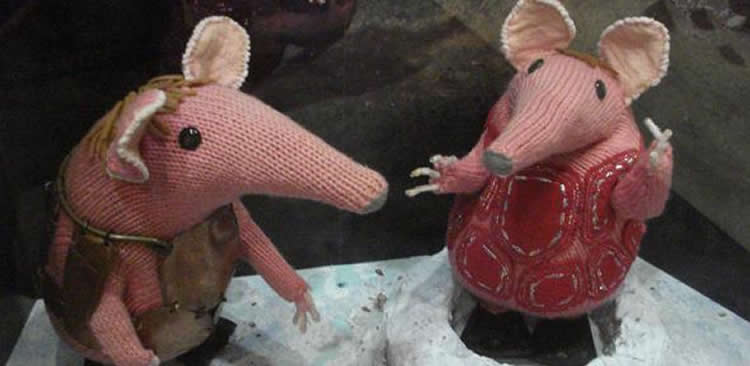Summary: To find a mate, mice use unique high frequency sounds using a mechanism that has only previously been observed in supersonic jet engines, a new study reports.
Source: University of Cambridge.
Mice court one another with ultrasonic love songs that are inaudible to the human ear. New research shows they make these unique high frequency sounds using a mechanism that has only previously been observed in supersonic jet engines.
An international group of researchers have found that mice use a mechanism similar to that of a jet engine inside their throats in order to make high frequency whistles – the first time such a mechanism has been observed in any animal.
Mice, rats and many other rodents produce ultrasonic songs that they use for attracting mates and territorial defense. These ‘singing’ mice are often used to study communication disorders in humans, such as stuttering. However, until now it was not understood how mice can make these ultrasonic sounds, which may aid in the development of more effective animal models for studying human speech disorders.
Now, new research co-authored at the University of Cambridge and published in the journal Current Biology has found that when mice ‘sing’, they use a mechanism similar to that seen in the engines of supersonic jets.
“Mice make ultrasound in a way never found before in any animal,” said the study’s lead author Elena Mahrt, from Washington State University.
Previously, it had been thought that these ‘Clangers’-style songs were either the result of a mechanism similar to that of a tea kettle, or of the resonance caused by the vibration of the vocal cords. In fact, neither hypothesis turned out to be correct. Instead, mice point a small air jet coming from the windpipe against the inner wall of the larynx, causing a resonance and producing an ultrasonic whistle.

Using ultra-high-speed video of 100,000 frames per second the researchers showed that the vocal folds remain completely still while ultrasound was coming from the mouse’s larynx.
“This mechanism is known only to produce sound in supersonic flow applications, such as vertical takeoff and landing with jet engines, or high-speed subsonic flows, such as jets for rapid cooling of electrical components and turbines,” said Dr Anurag Agarwal, study co-author and head of the Aero-acoustics laboratories at Cambridge’s Department of Engineering. “Mice seem to be doing something very complicated and clever to make ultrasound.”
“It seems likely that many rodents use ultrasound to communicate, but very little is known about this – it is even possible that bats use this cool mechanism to echolocate,” said the study’s senior author Dr Coen Elemans from the University of Southern Denmark. “Even though mice have been studied so intensely, they still have some cool tricks up their sleeves.”
Source: Sarah Collins – University of Cambridge
Image Source: NeuroscienceNews.com image is adapted from the University of Cambridge press release.
Original Research: Abstract for “Mice produce ultrasonic vocalizations by intra-laryngeal planar impinging jets” by Elena Mahrt, Anurag Agarwal, David Perkel, Christine Portfors, andCoen P.H. Elemans in Current Biology. Published online October 7 2016 doi:10.1016/j.cub.2016.08.032
[cbtabs][cbtab title=”MLA”]University of Cambridge “Mice Sing Like Jet Engines to Find a Mate.” NeuroscienceNews. NeuroscienceNews, 10 October 2016.
<https://neurosciencenews.com/mouse-song-mating-5252/>.[/cbtab][cbtab title=”APA”]University of Cambridge (2016, October 10). Mice Sing Like Jet Engines to Find a Mate. NeuroscienceNew. Retrieved October 10, 2016 from https://neurosciencenews.com/mouse-song-mating-5252/[/cbtab][cbtab title=”Chicago”]University of Cambridge “Mice Sing Like Jet Engines to Find a Mate.” https://neurosciencenews.com/mouse-song-mating-5252/ (accessed October 10, 2016).[/cbtab][/cbtabs]
Abstract
Mice produce ultrasonic vocalizations by intra-laryngeal planar impinging jets
Rodent ultrasonic vocalizations (USVs) are a vital tool for linking gene mutations to behavior in mouse models of communication disorders, such as autism. However, we currently lack an understanding of how physiological and physical mechanisms combine to generate acoustic features of the vocalizations, and thus cannot meaningfully relate those features to experimental treatments. Here we test and provide evidence against the two leading hypotheses explaining USV production: superficial vocal fold vibrations, and a hole-tone whistle. Instead, we propose and provide theoretical and experimental evidence for an alternative and novel vocal production mechanism: a glottal jet impinging onto the laryngeal inner planar wall. Our data provide a framework for future research on the neuromuscular control of mouse vocal production and for interpreting mouse vocal behavior phenotypes.
“Mice produce ultrasonic vocalizations by intra-laryngeal planar impinging jets” by Elena Mahrt, Anurag Agarwal, David Perkel, Christine Portfors, andCoen P.H. Elemans in Current Biology. Published online October 7 2016 doi:10.1016/j.cub.2016.08.032






